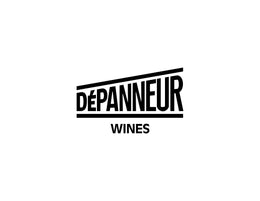
Haarmeyer Cellars - Cresci Chenin Blanc Palmero VY Sacramento 2023 750ml (12.2% abv)
a new (for us) chenin from Craig, just as rare & delicious as the others
we only got 6 bottles
The Palmero Family Vineyard was planted in 1983 by Gerald Cresci on a rocky swale in
the Borden Ranch sub AVA of Lodi. The soils are austere: pink granite and quartz. This
geology is the result of eons of erosion and probably a major event where an ancient
moraine collapsed, violently sending granite (and possibly volcanics) through the
geologically diverse foothill metamorphic zone thereby depositing a variety of materials
on the valley floor. One can observe similar deposits in several other drainages up and
down the valley west of the Sierra Nevada foothills. Western low lying areas of
Calaveras County and eastern Clements Hills sub AVA are similar in soil composition to
the Borden Ranch area.
The Palmero Family Vineyard locale is quite warm and the vines naturally crop at about
2.2 tons to the acre. We have 6 of the 13 rows here and we pick the fruit ourselves long
before normal harvest time when the laborers are readily available. It makes little sense
to hire a crew to pick six rows; the personal satisfaction we get from harvesting this
special spot is great, although picking does take quite a while due to the small clusters.
It takes a lot more work to pick when the clusters are the size of a golf ball!
Warm days and rocky soil help create early ripening, small clusters, which brings a
concentration of aromas and flavors to the wine while maintaining high natural acidity.
This is crucial to making long lived, complex Chenin Blanc. Ripeness and good acidity
are sometimes hard to come by in this part of California. This little vineyard, although
part of Lodi, is actually within Sacramento County allowing us to put 'Sacramento' on
the label. It's a point of pride for us to be able to do that with the special wine that this
vineyard produces.
The Cellar:
Our basket press holds one ton of macerated fruit, so we foot tread the clusters and
include the stems. We use no sulfur at the press and give the juice plenty of oxygen so
we can oxidize the phenolics and end up with a sturdy and stable wine. The must is
fermented with native yeast in a neutral 600 liter oval shaped cask. ML is conducted
natively, too. The wine remains on gross lees, no batonnage, until we bottle without
fining or filtration in August. We add minimal effective sulfur at bottling which is
20-40ppm depending on pH.
The Numbers:
Picked September 2
3.3 pH
21.5 Brix
a juicier vintage - dry but with a few grams of RS,
region
varietal
style
farming/cellar
pairing
